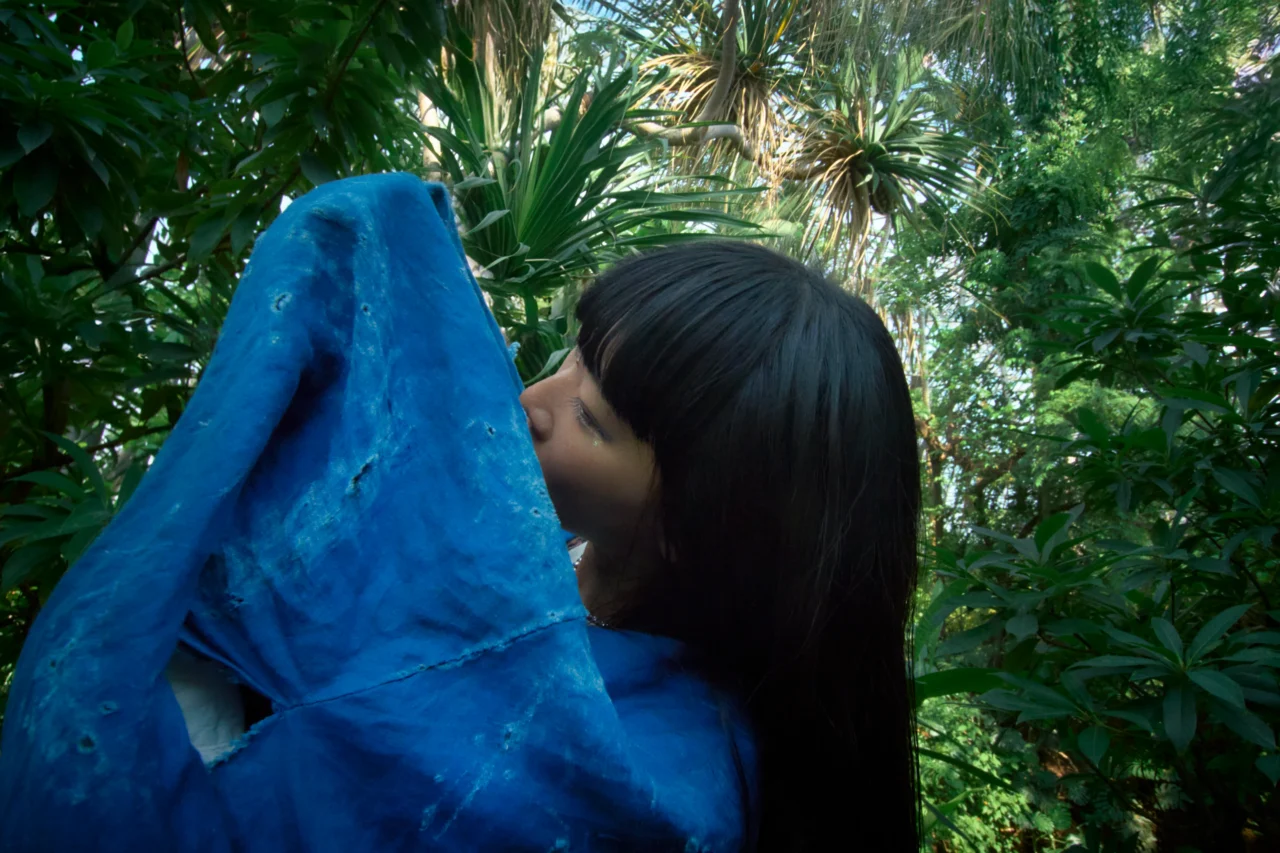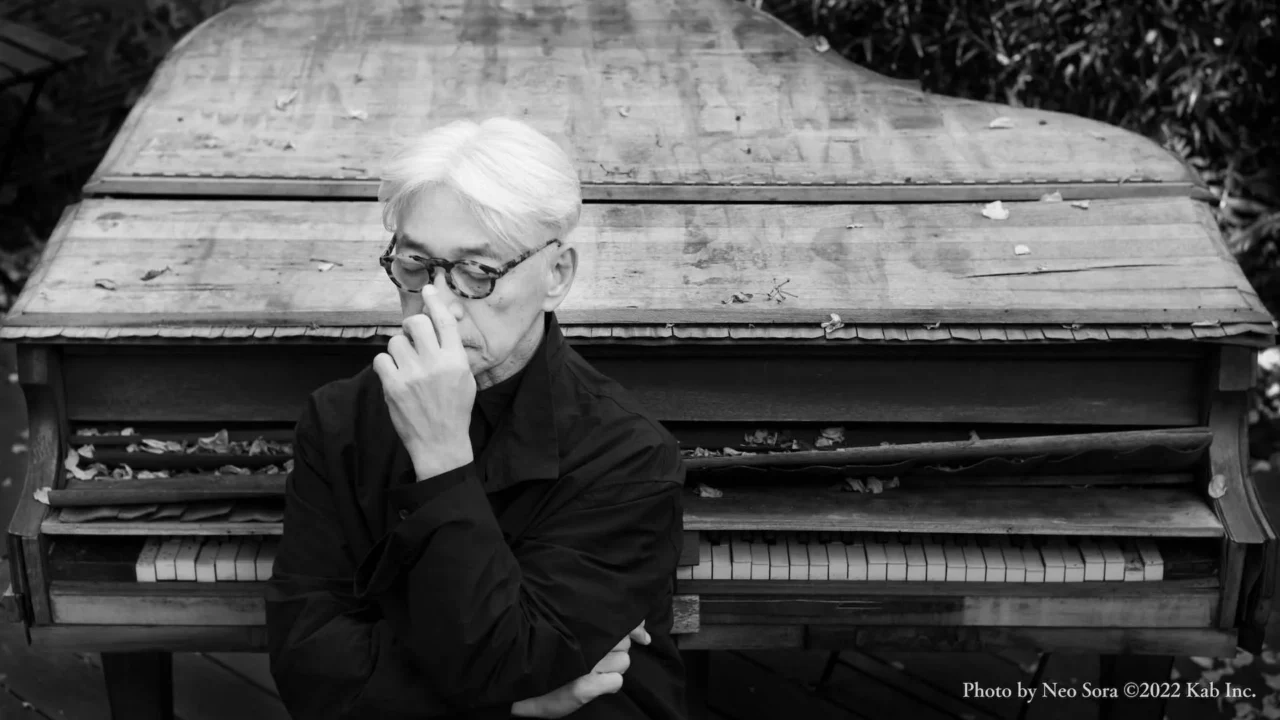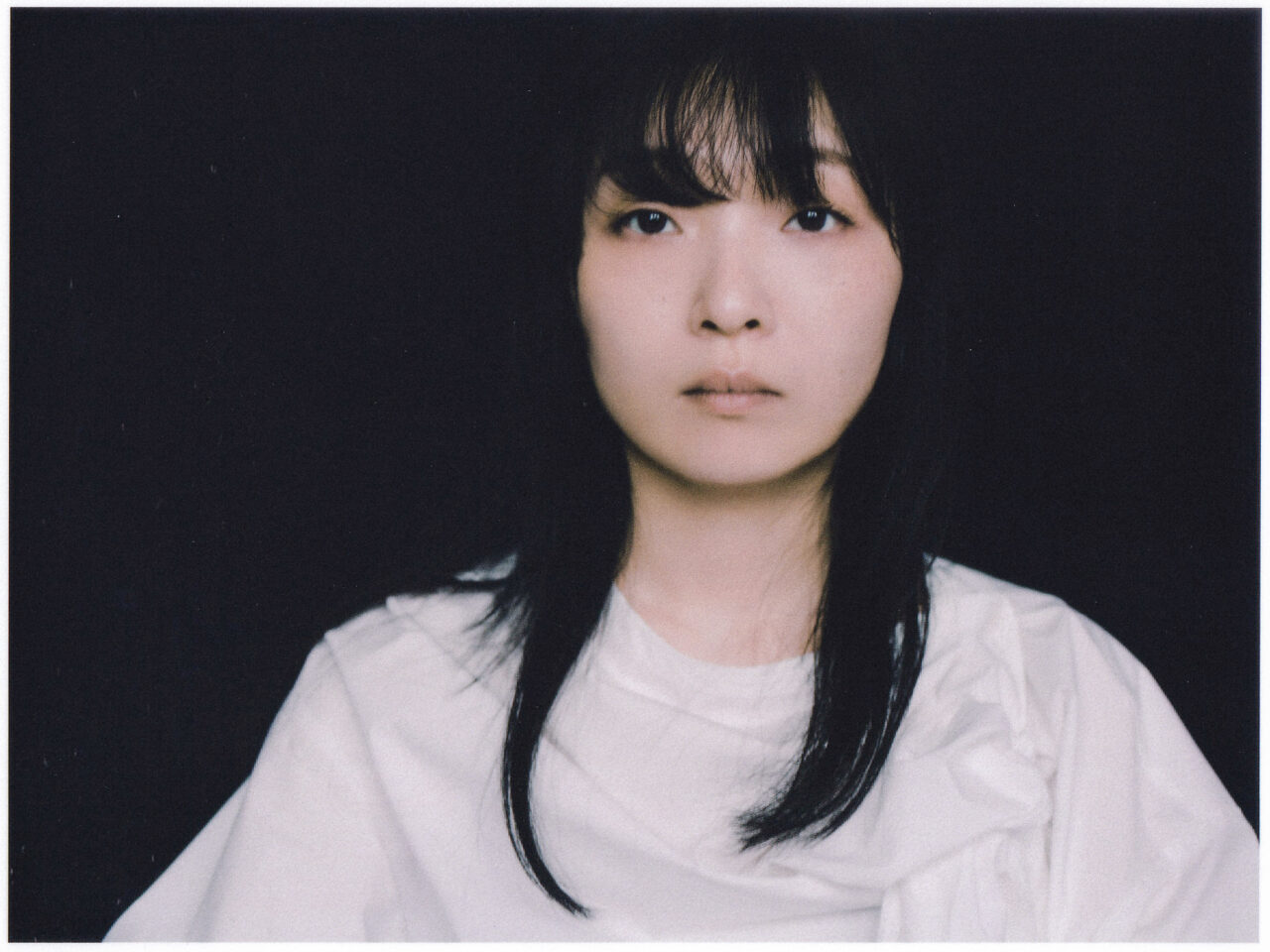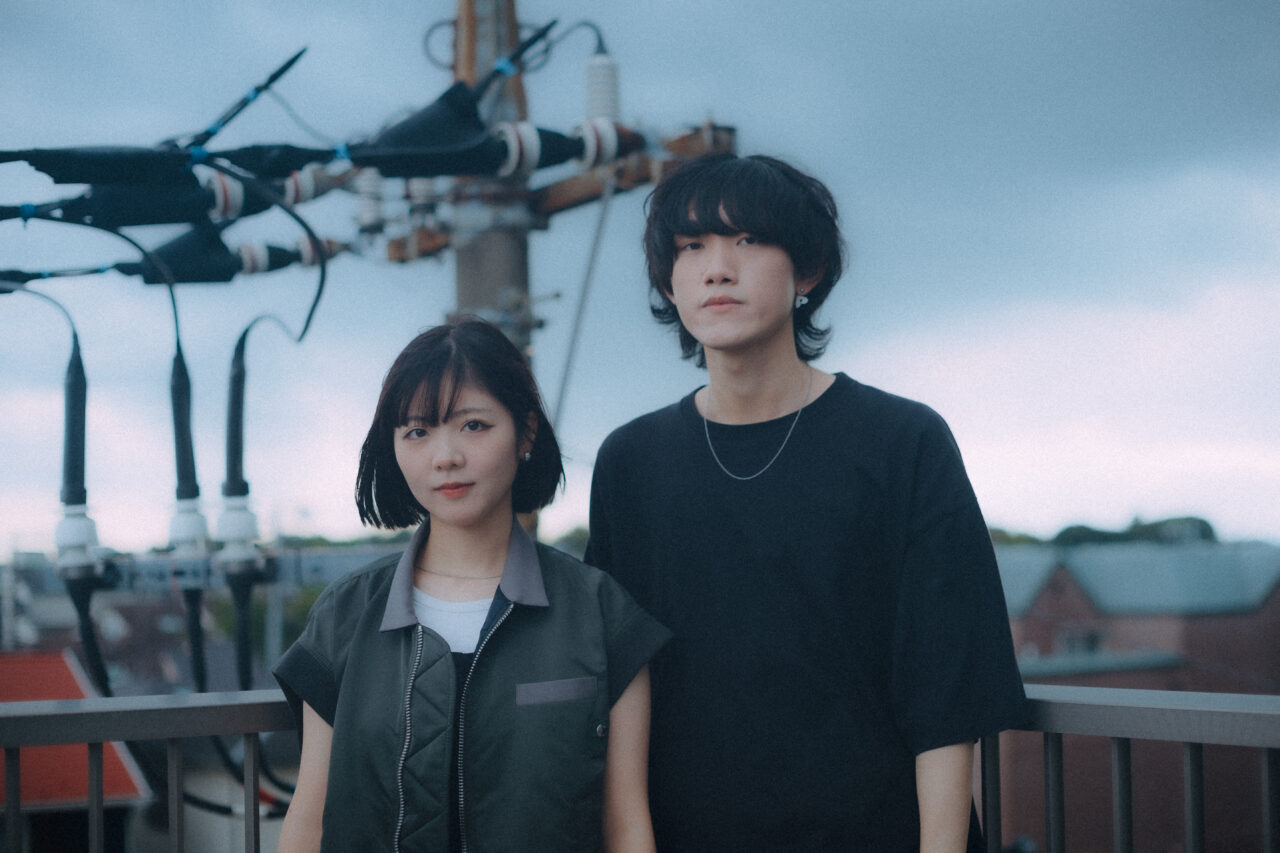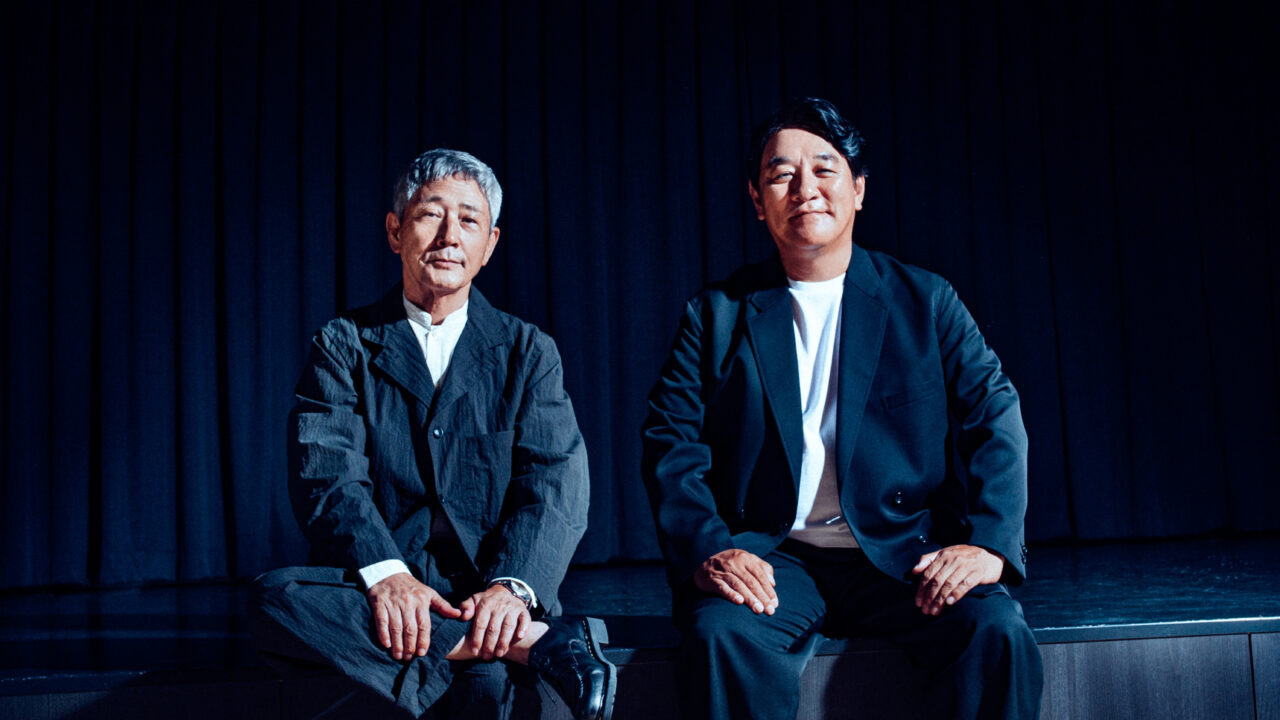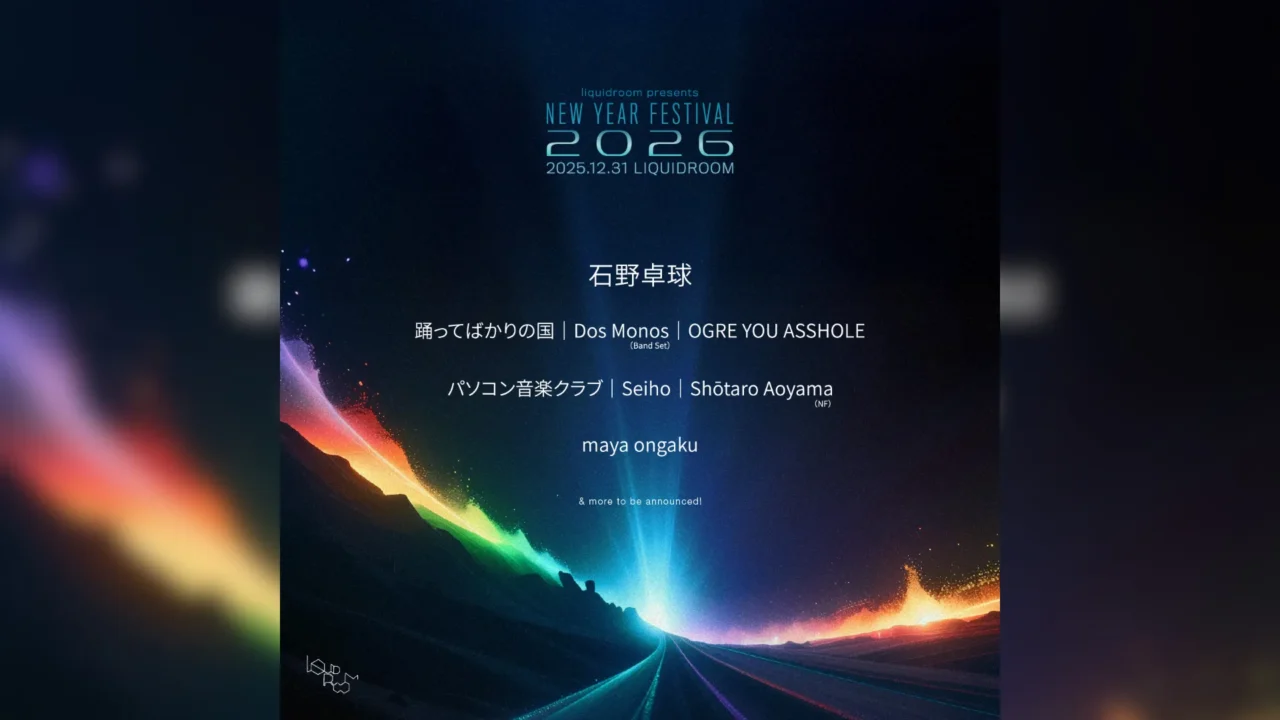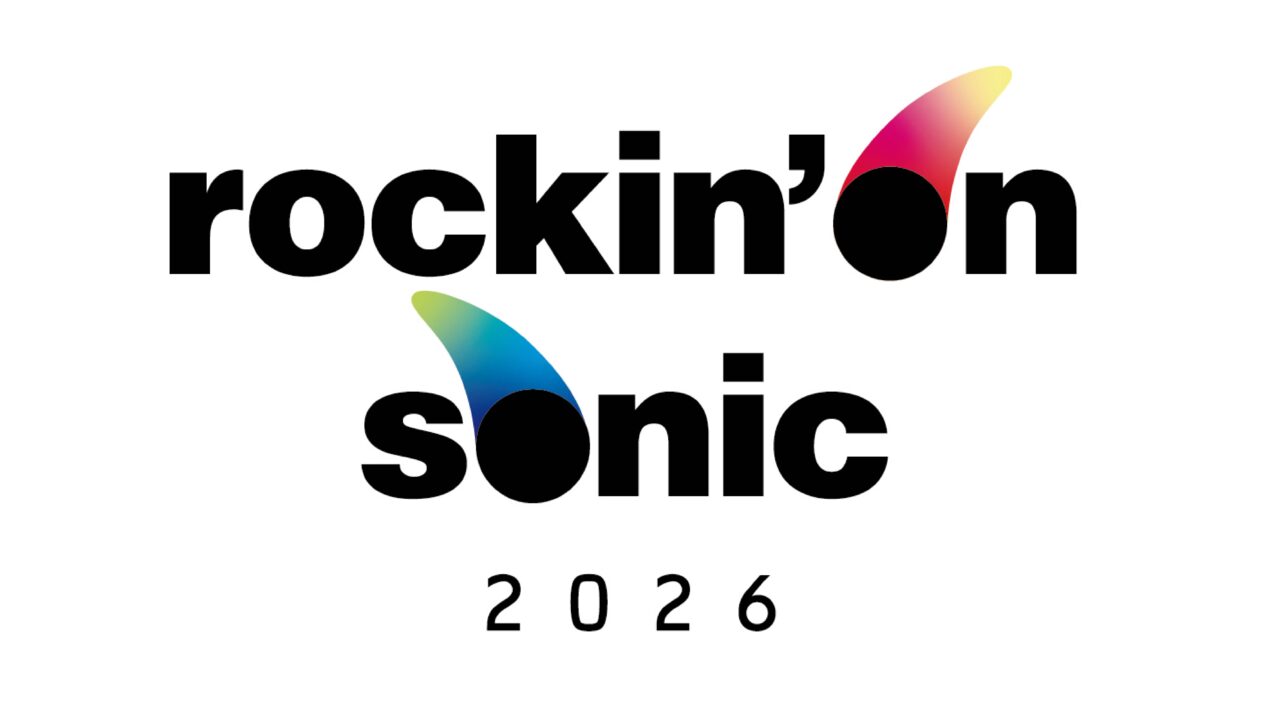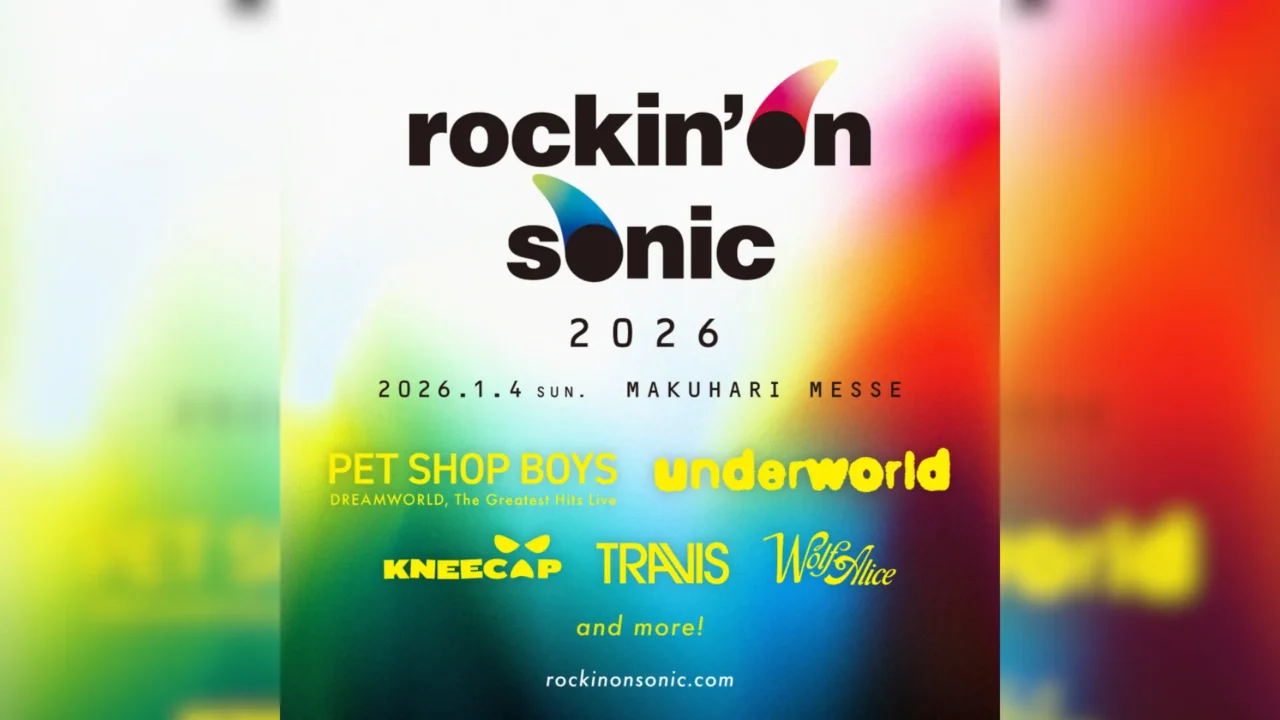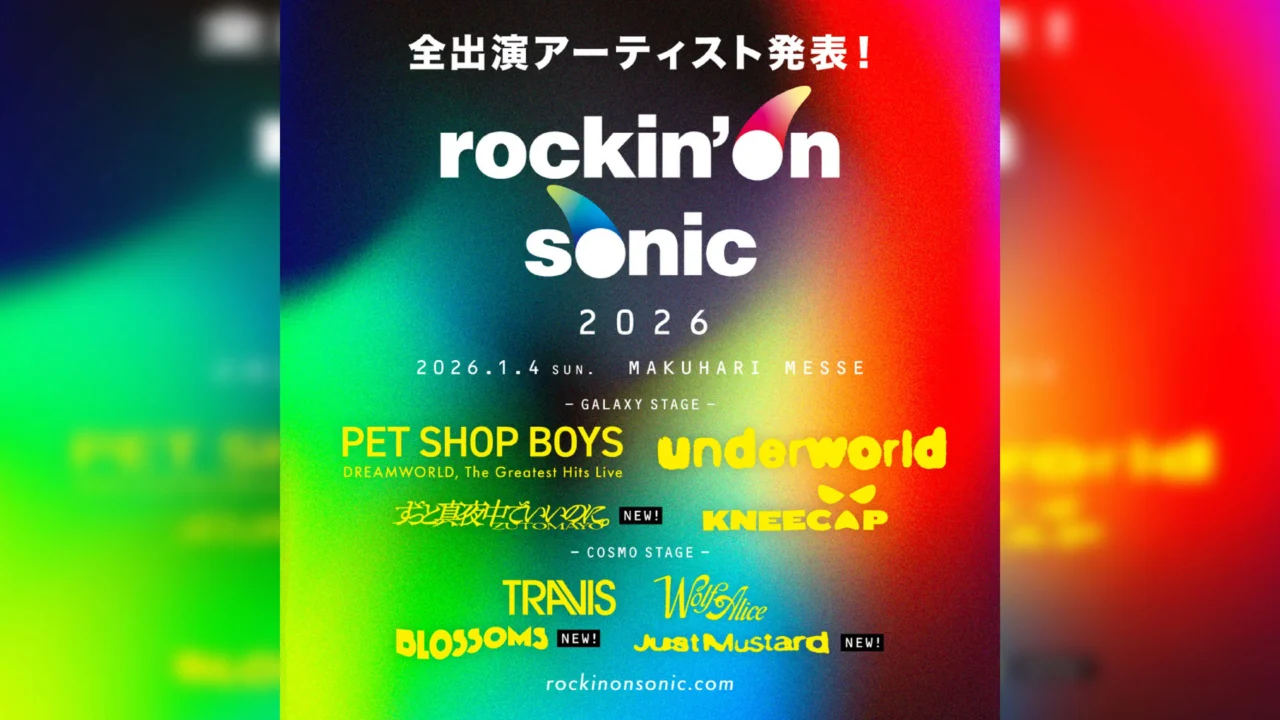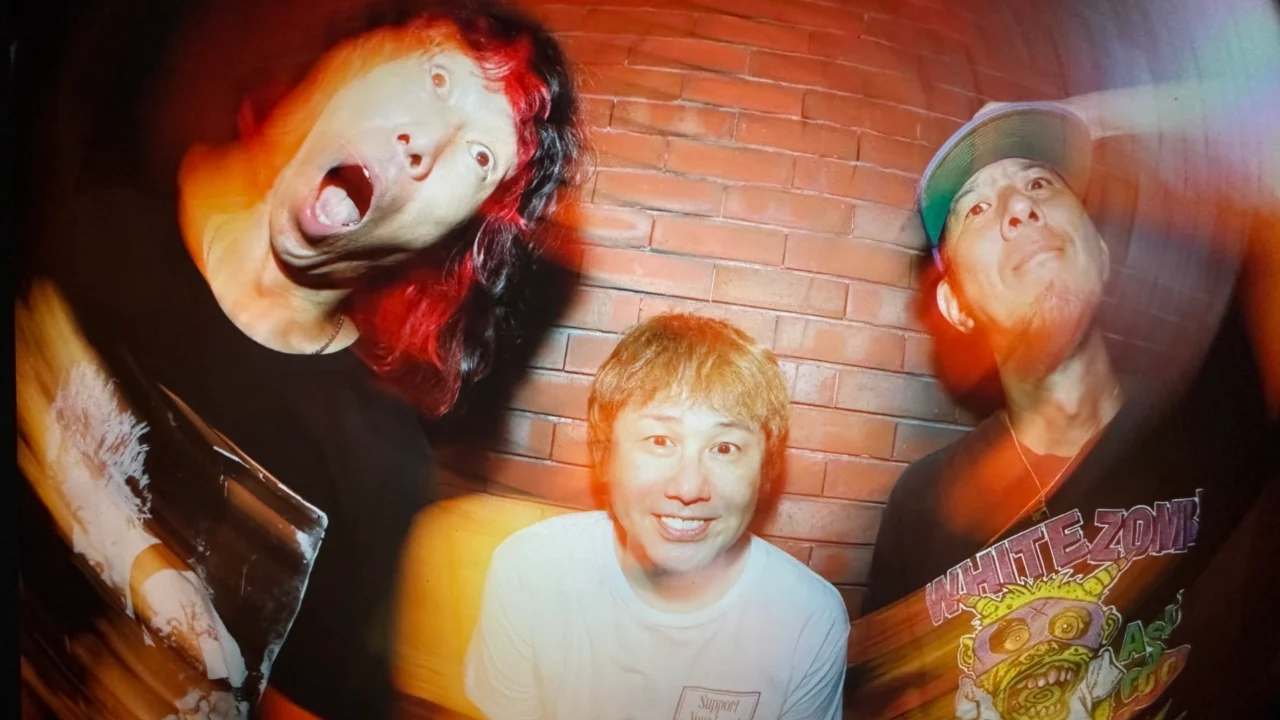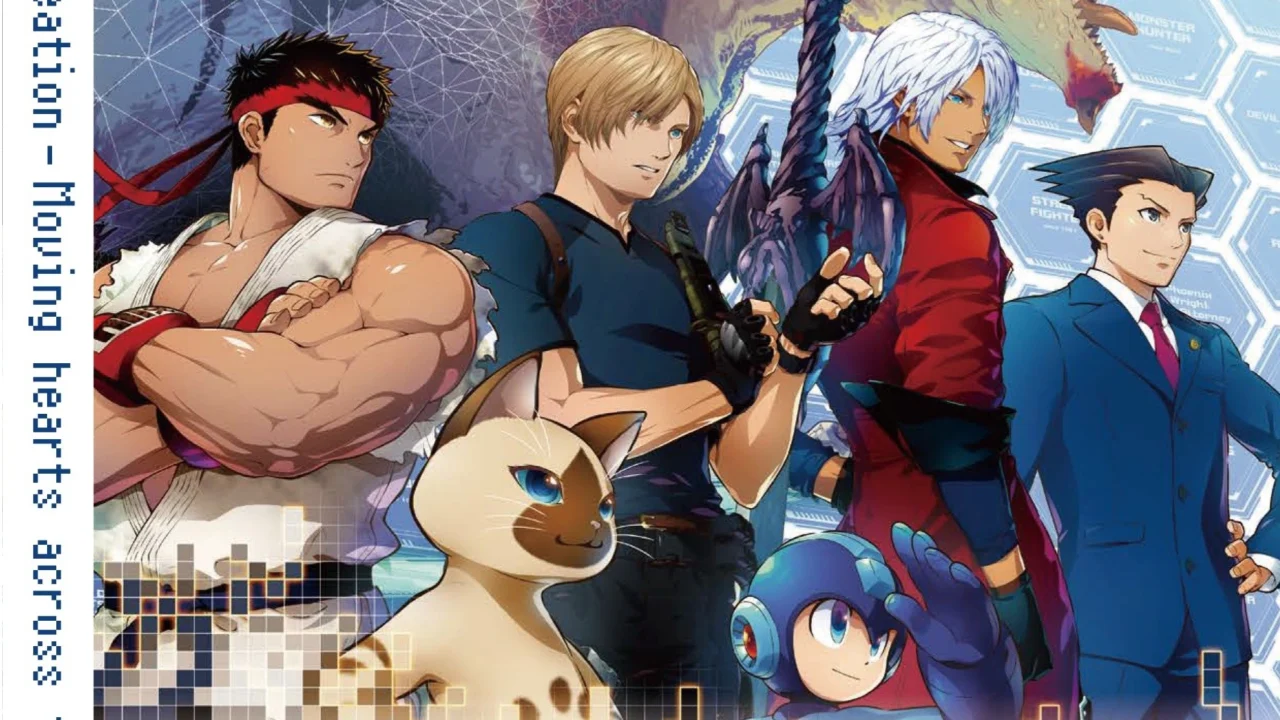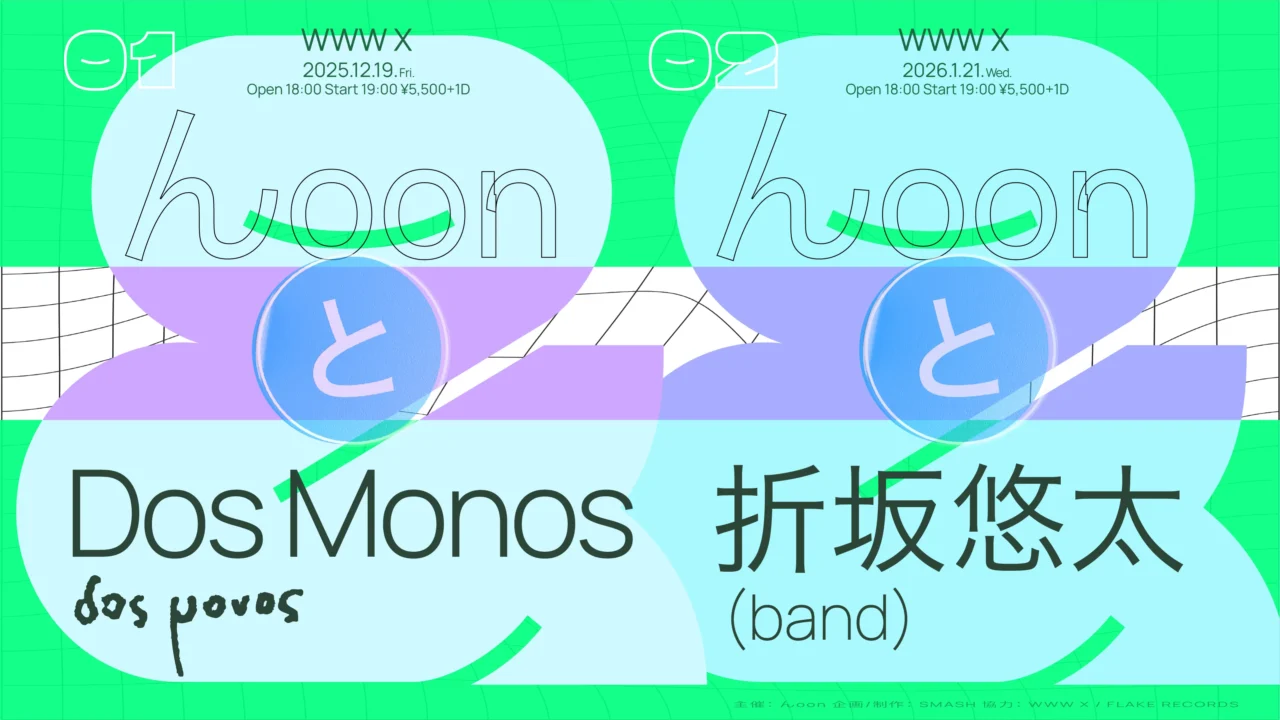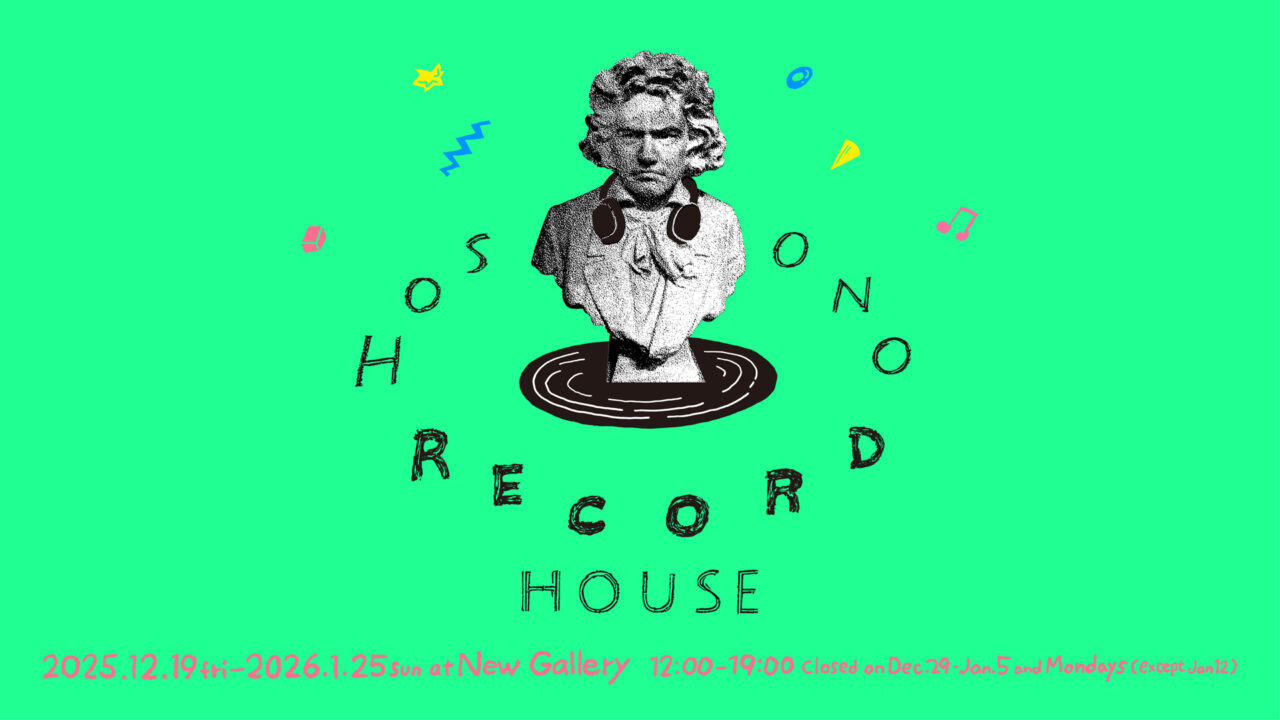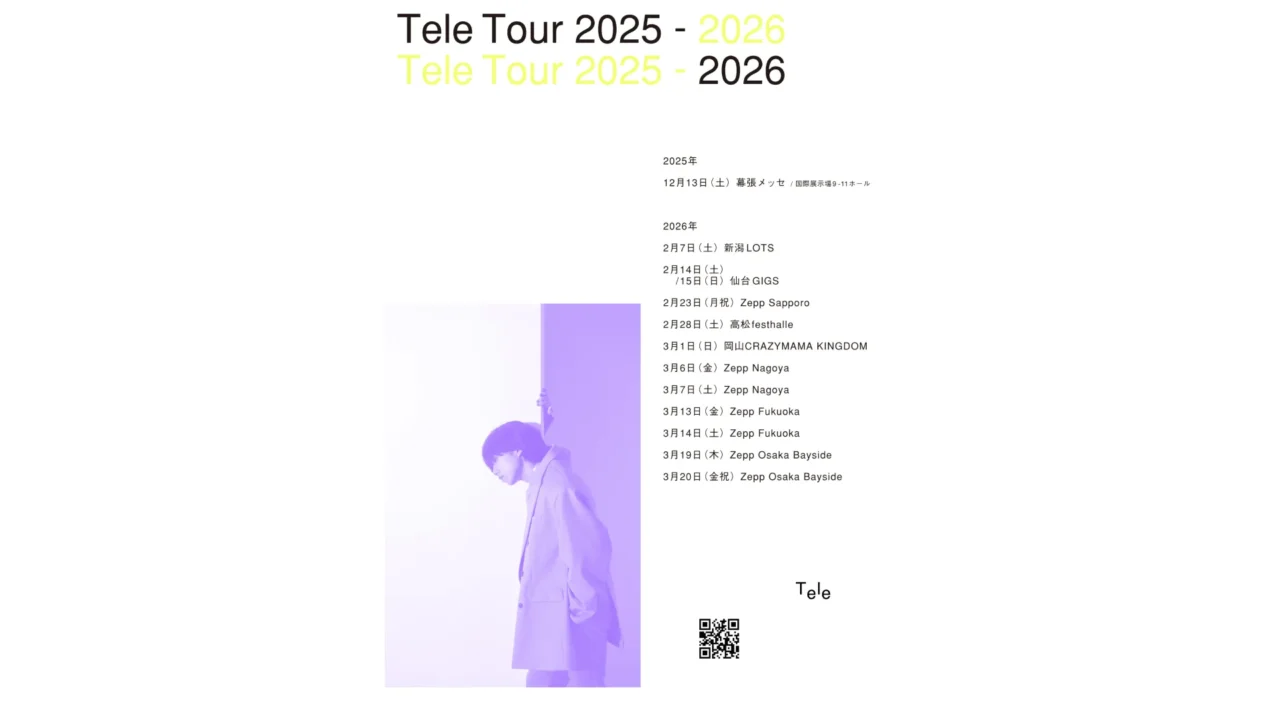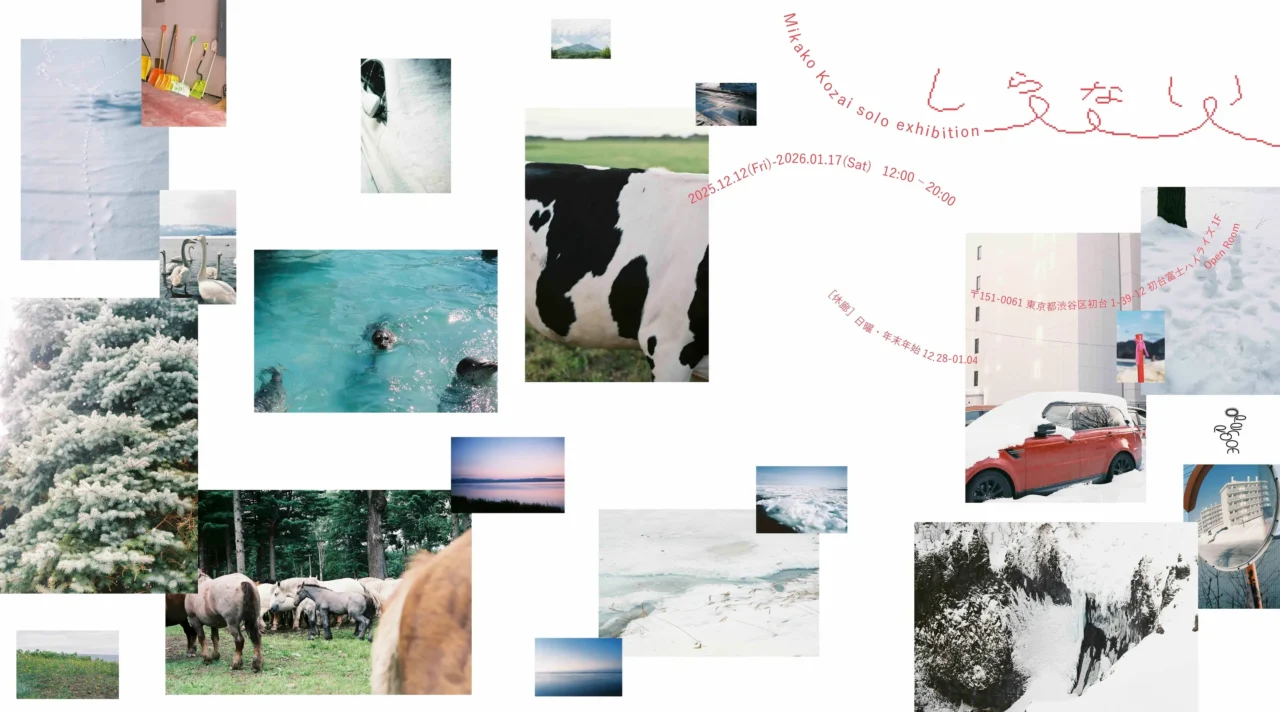From November 7th to 10th, Tokyo transforms into a vibrant hub for art lovers with the return of Art Week Tokyo (AWT). Featuring standout programs like “AWT FOCUS,” a “buyable exhibition,” and “AWT VIDEO,” a captivating collection of video artworks, the event offers an exciting blend of creativity. Visitors can easily explore the array of exhibitions across museums and galleries, hopping between venues aboard a free shuttle bus.
Among the 53 participating venues, singer-songwriter Salasa paid a visit to Takahashi Ishii Gallery, currently showcasing the thought-provoking exhibition “The Toys of Peace” by Justin Kagiat & Raphael de la Cruz. After taking in the works, Salasa, known for her hands-on approach to music artwork and live event design, reflected on her personal journey with art and the deep connection she’s built with it over the years.
INDEX
Anticipating the Energy of Serendipitous Creations in a Two-Person Exhibition
Among the AWT participating venues, you selected Takahashi Ishii Gallery to visit the “The Toys of Peace” exhibition. What made you choose this particular exhibition?
Salasa: When I saw the main visual for the exhibition, it immediately caught my attention. I thought the serendipity that comes from a two-person exhibition could also make it interesting, so I chose it.

Do you enjoy works that involve an element of coincidence?
Salasa: Yes, I do. When I create music, I usually collaborate with a trackmaker. While I provide references and share my thoughts, the results are often something I never expected. There’s something special about working with others—moments when the collaboration produces something that pushes me beyond my own limits. I believe that the unexpected energy and chance that come from creating together hold a unique power, not just in music but in all forms of art.

A singer-songwriter from Shonan. Not limited to her music career, she also works as an artist, apparel brand buyer, photographer, and hula dancer, expanding her activities in diverse and free-spirited ways. Drawing inspiration from the blues genre, which was born out of sadness and despair, she embraces her coined phrase “Live Bluesy” as a theme, transforming negative emotions and experiences into art.
In the installation-style exhibition, the gallery staff mentioned that the video works feature a character that mirrors the artist, overwhelmed by the act of creation. You seemed to really connect with that.
Salasa: The feeling of being overwhelmed by the act of creation really hit me—it was so much like myself. It wasn’t one cohesive story, but rather a patchwork of different images coming together. I resonated with it so deeply that it created its own meaning within me.


Salasa: I liked the painting works simply for their color schemes and the overall vibe. They felt very familiar and approachable.

INDEX
Romance in Works that Hide the Unexpected in Everyday Life
Have you been to Takahashi Ishii Gallery before?
Salasa: It was my first time. That’s part of why I picked it.
Do you usually visit galleries or museums?
When I was attending Joshibi (Joshibi University of Art and Design) and after I dropped out of university, when I was going to art school, I went quite often. It was fun to research and share with my friends about artists I discovered. After I started my music career, I hadn’t been going to museums or galleries much, but recently, I was recommending artists to a friend and realized, “I really like art.” It reminded me that I wanted to visit exhibitions again.
(*Note: Art school refers to the one in Jimbocho, Tokyo, founded in 1969, which offers programs in painting, printmaking, photography, contemporary art, composition, DTM, theater, fashion, manga, and design. The school was founded by Koji Ishii and Hiroshi Kawahashi of the Contemporary Shiso-sha, with the logo design created by Haruhiko Akasegawa.)
Which artists did you recommend to your friend?
Salasa: Koichi Mitsuoka and Tomotoshi. Mitsuoka creates works by writing words with tape in the streets, and his word choices are always spot on. He even built his own art center along the Tamagawa riverbanks, and I really like the raw, earthy feeling that comes through in his work.
Find Koichi Mitsuoka’s Instagram posts here.
Salasa: Tomotoshi also runs a space called the TOMO City Museum in Sumida Ward. His works often involve creating specific movements in the city, which in turn shape the actions of the people around. I think I’m drawn to the romance of how, within everyday scenes, unexpected movements or locations can suddenly appear.
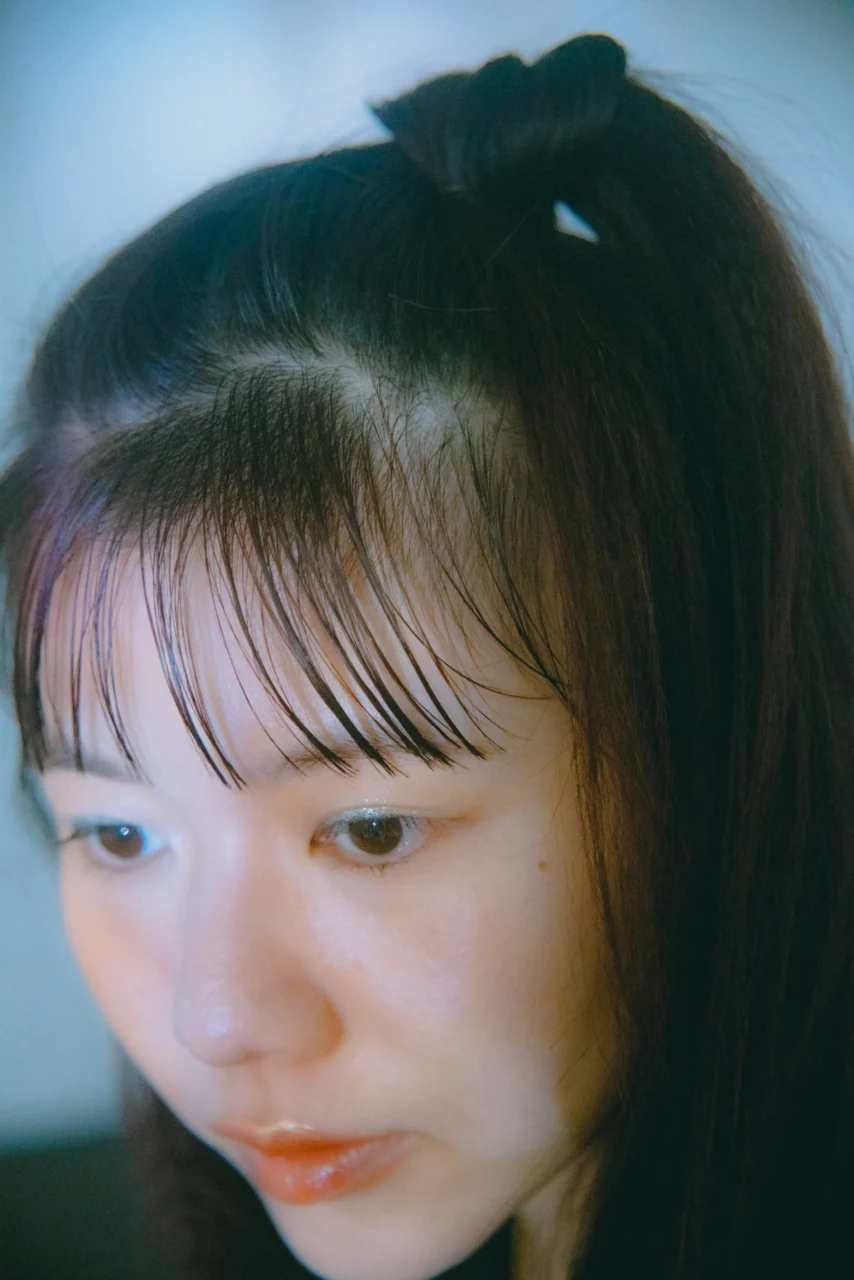
INDEX
Taro Okamoto and Genpei Akasegawa: Confidants of Adolescence
When did you become interested in art?
Salasa: I’ve always liked things like masks, clay figures, and folk crafts since I was a child. I used to want to go to the Mingeikan (Folk Crafts Museum) and, when traveling, I preferred pottery experiences over outdoor activities. So, when I learned about Taro Okamoto and Haruhiko Akasegawa in high school, I was really moved. It was right during my adolescence, and I felt like there was no one at school I could talk to or relate to, so when I found out there were people who understood, it felt like a kind of salvation.
They were like friends you could talk to, then. How did you come to know about them?
Salasa: My dad was a surfer and loved California culture, so I was familiar with hippie culture and things like Woodstock. I started researching 1960s culture and movements, and through Taro Okamoto’s “Tower of the Sun” at the 1970 Osaka Expo, I learned about him. I also read books on contemporary art and thought Haruhiko Akasegawa was really interesting. That’s when I began thinking about studying art. Since I didn’t have any drawing experience, I looked for a course that didn’t require drawing for the entrance exam.
You studied art production at Joshibi, right?
Salasa: Yes, but I stopped going after about a year. After leaving university, I studied oil painting, architectural history, and art history at a private contemporary art school run by a woman who graduated from Musashino Art University. Later, I attended a course called “The Backdoor to Contemporary Art” at an art school for about six months.
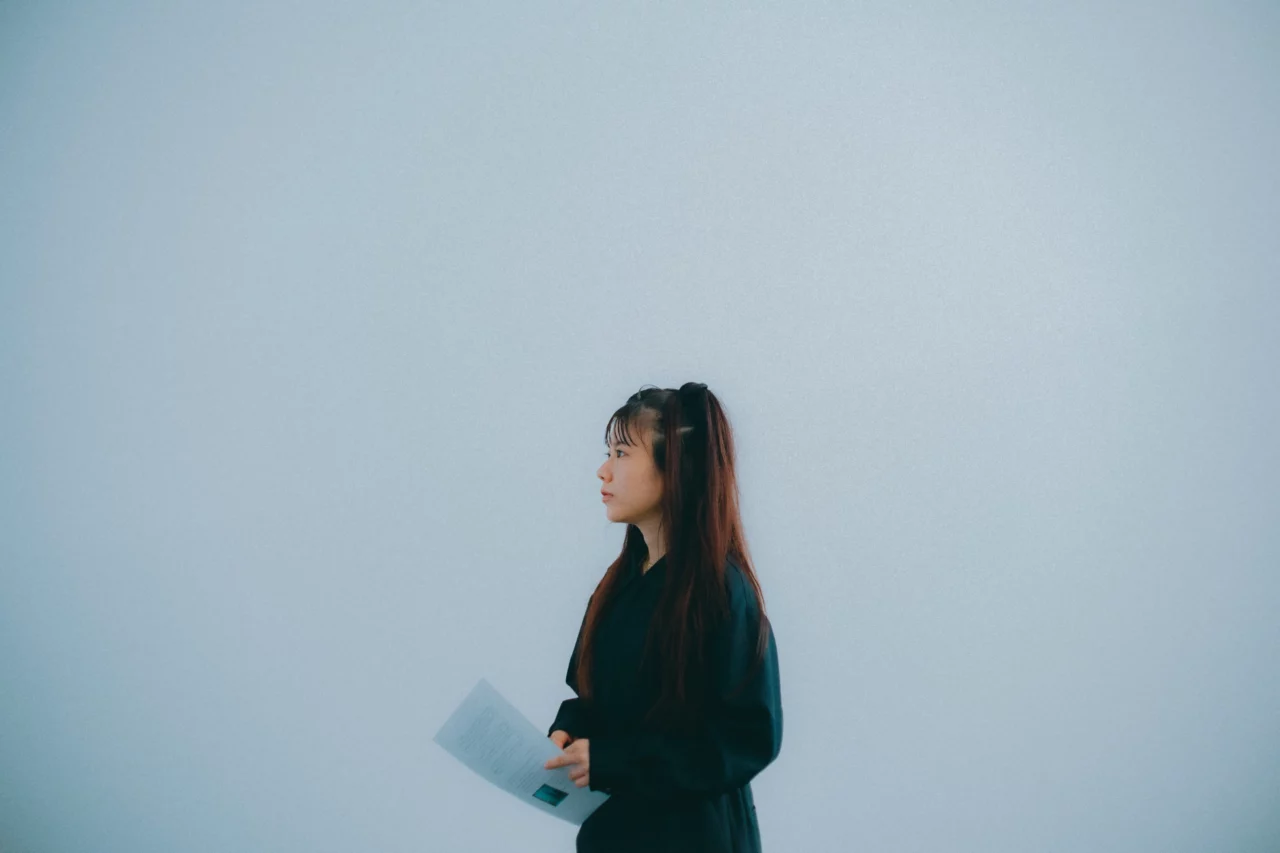
INDEX
A Place of Inspiration: Attending Events and Galleries to Meet Icons
I saw in another interview that, during your teenage years, you went to meet artists and activists you were interested in.
Salasa: Yes, from around my senior year of high school to after I dropped out of university, up until about 2021, when I didn’t think I would become a musician. I was interested in a lot of different things, and I thought, if I had to make a living, I wanted to do something I enjoyed. So, whenever there was an opportunity to attend events or exhibitions by people I admired, I would go.
Who did you go to meet?
Salasa: The first person that comes to mind is Fumita Hasegawa. I happened to come across a book of his, which I found fascinating, and I went to meet him at a flea market event he was holding in Nakameguro.
When I was a teenager, I also admired eri from DEPT. For about six months, before I debuted, I worked at the store “Mingtian Haohao” run by eri and the others. It was a time when I really wanted to absorb everything I could about what my role models thought and how they lived. The people I met and the experiences I had during that time have connected to where I am now, and it was a time full of great encounters.
(*Note: DEPT is a pioneering vintage select shop in Nakameguro. Owner eri is also known as an activist for environmental issues like climate change.)
You were very proactive during that time.
Salasa: Yes, I was incredibly spontaneous. I even went to Kyoto alone with my guitar and ended up singing at a gallery unexpectedly [laughs].
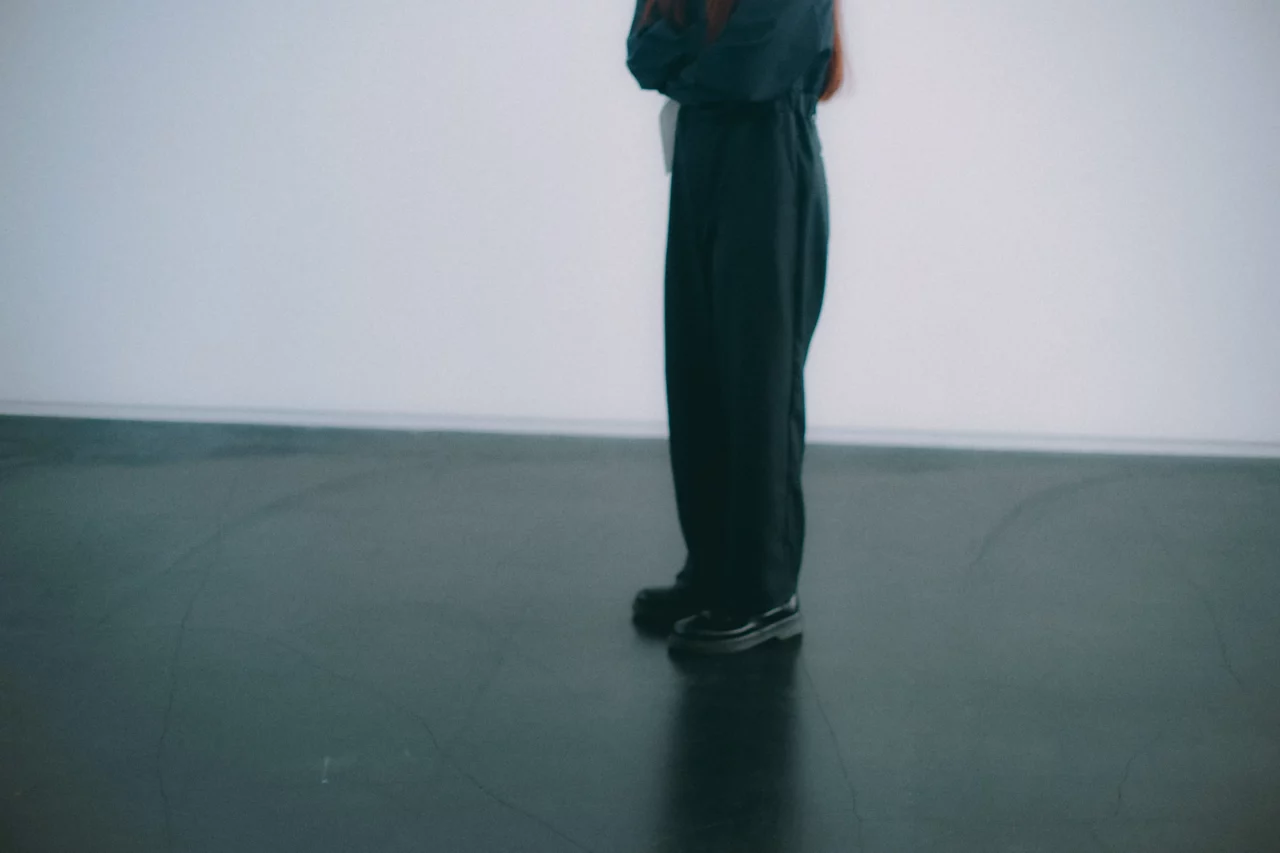
Earlier, you mentioned that since starting your music career, you’ve distanced yourself from galleries and museums. Why is that?
Salasa: With music becoming my job, there were changes in my environment, and during the pandemic, when I was feeling down, I went to the Setouchi Triennale. I ended up being more moved by nature than the artwork. Since then, I realized that I’m more drawn to things like nature—things that can’t be controlled—rather than what people create. So, I hadn’t been going much. But today, while looking at the artwork, I realized that it’s still fun and exciting. I think I’ll visit more exhibitions again.
Justin Cagiat & Raphael Delacruz: “The Toys of Peace” Exhibition Venue: Taka Ishii Gallery (complex665)
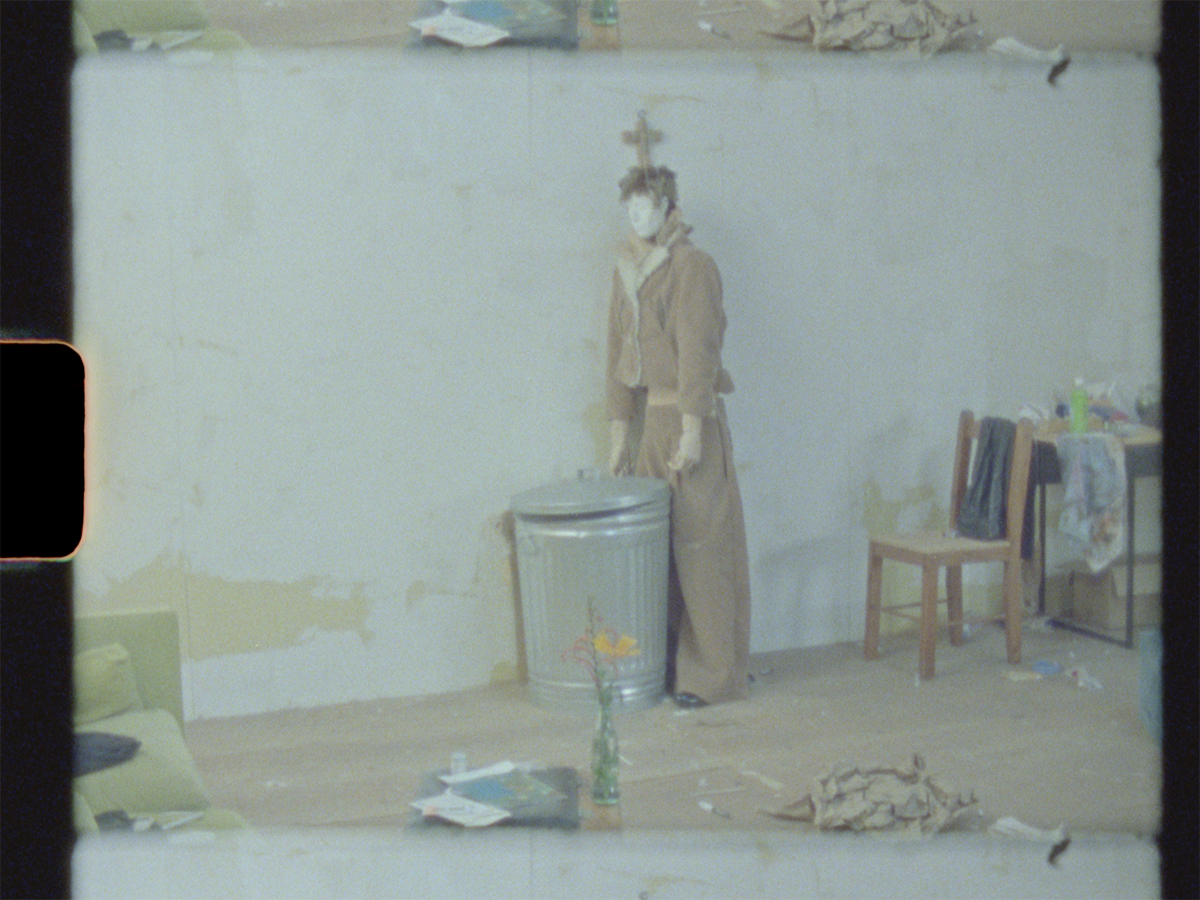
A two-person exhibition by Justin Cagiat (born 1989, Tokyo) and Raphael Delacruz (born 1989, San Francisco). This exhibition is composed of new works created through their collaboration, featuring diamond-shaped paintings alongside a film installation, The Toys of Peace. The title of the work, which evokes the short story Toys of Peace, is reflected in the teaser, offering a glimpse into the dreamlike imagery of the film’s world.
Exhibition Period: October 5, 2024 (Saturday) – November 10, 2024 (Sunday)
Venue: Taka Ishii Gallery, complex665, 3F, 6-5-24 Roppongi, Minato-ku, Tokyo
URL: Taka Ishii Gallery
INDEX
“How to Navigate Art Week Tokyo?“
Exhibitions Picked by Salasa, Focusing on Invisible Energies
This time, you mentioned a few other exhibitions from the participating venues of AWT that caught your interest.
Salasa: First, I was intrigued by the solo exhibition Sleepless Tonight by Beijing-based artist Chen Wei, currently being held at Ota Fine Arts.
Chen Wei: Sleepless Tonight Venue: Ota Fine Arts
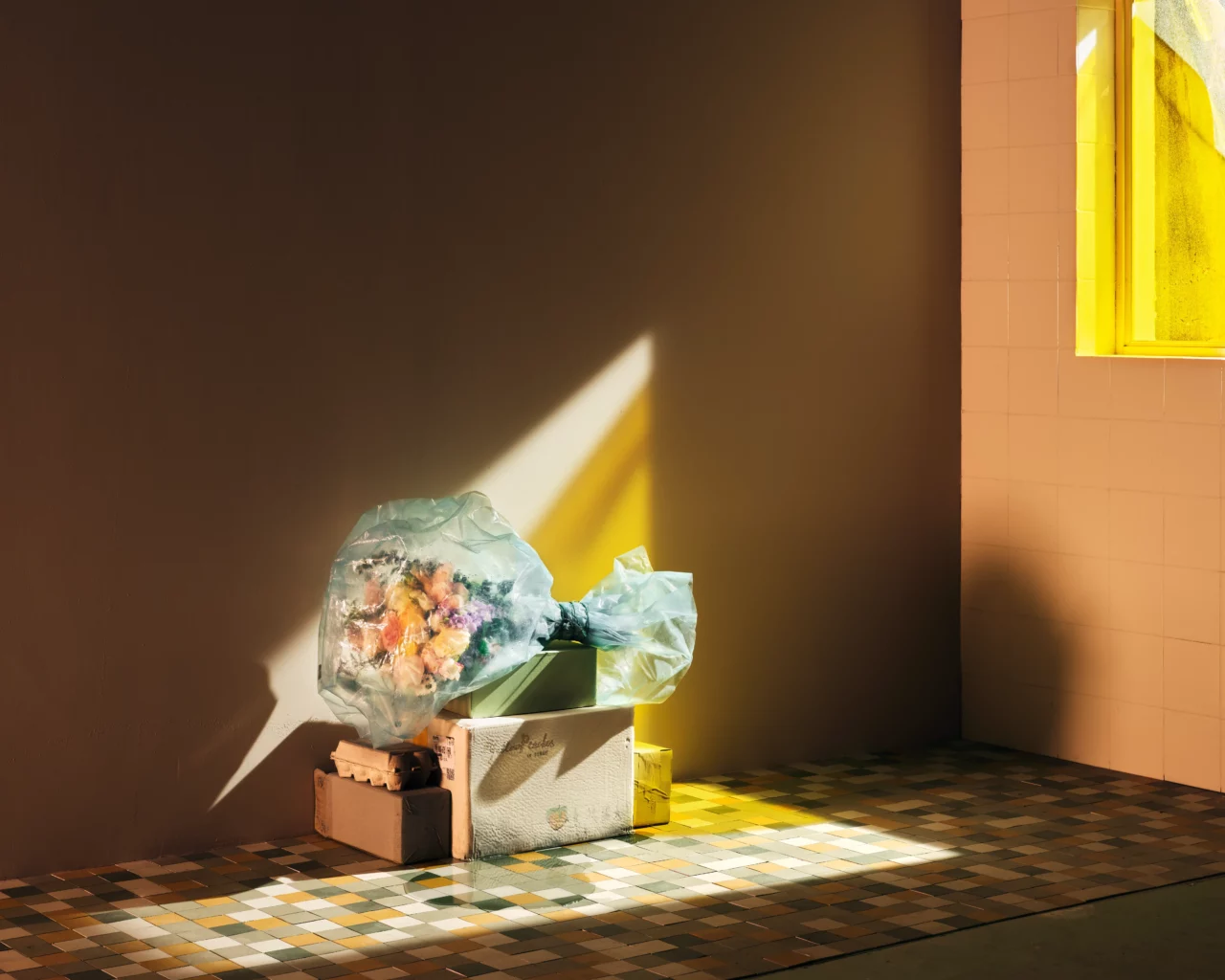
Chen Wei, an artist based in Beijing, is one of the “post-80s” generation of Chinese artists born after the one-child policy and the reform and opening-up policies. Chen’s photographic works create fictional scenes set in rapidly developing cities that take on an unreal quality. These works evoke a sense of absence and alienation from the people who should inhabit them, prompting reflection on the relationship between society and the individual in a dramatically changing world. This exhibition will feature his new works, including three-dimensional pieces using LED panels.
Exhibition Period: October 19, 2024 (Saturday) – November 30, 2024 (Saturday)
Venue: 3F, Pyramide Building, 6-6-9 Roppongi, Minato-ku
URL: Ota Fine Arts
Salasa: Things from other countries can seem strange when viewed from the outside, but when you’re living within that context, they become normal, right? There are aspects that you can’t fully understand unless you listen to local artists and see their works in person, so I thought it would be interesting.
Rei Naito: come and live – go and live Venue: Ginza Maison Hermes Forum
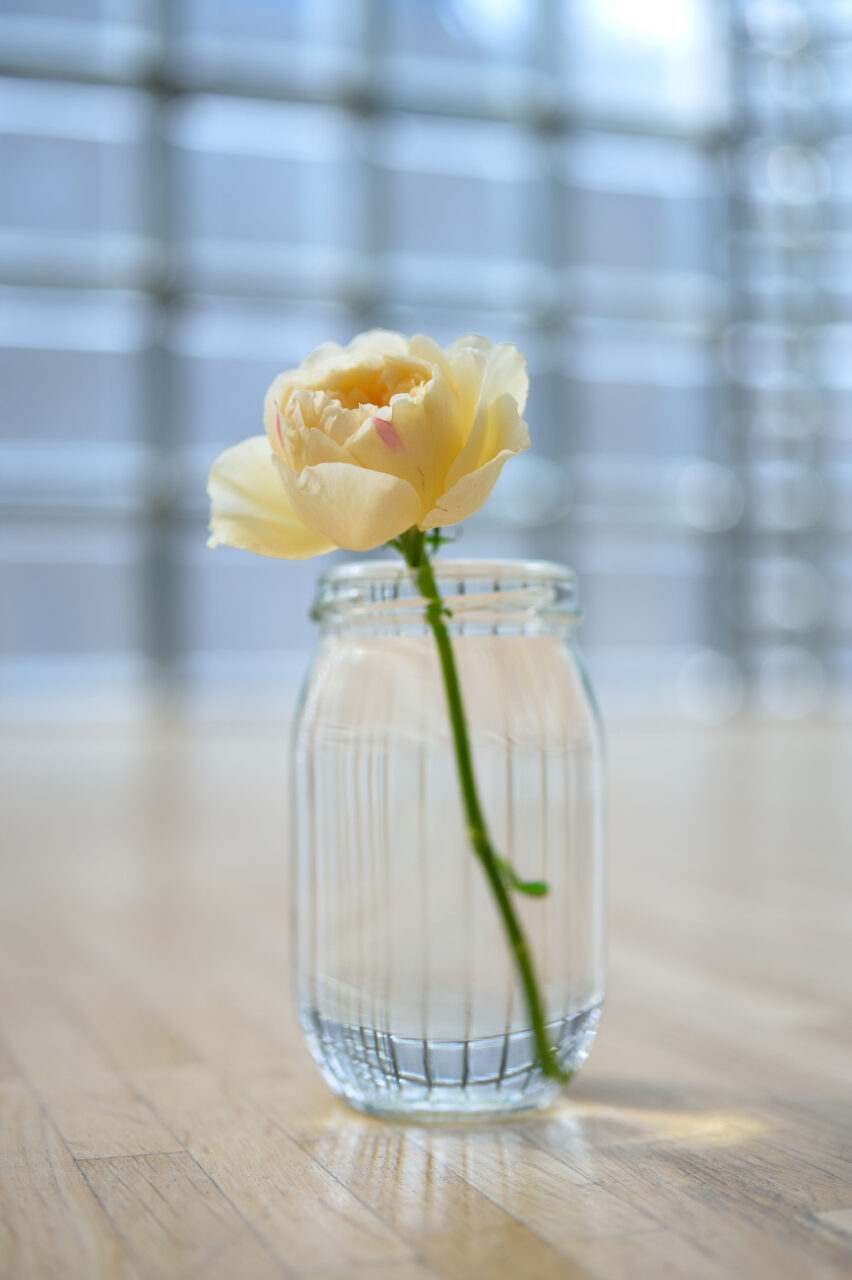
Rei Naito’s solo exhibition, themed “Is Existence on Earth Itself a Blessing?” explores the subtle moments and phenomena that often go unnoticed in our daily lives, such as the transitions of light, shadow, water, and air, which exist in the space between life and death. Through her work, Naito uncovers a “fundamental scene of life,” connecting it with our own experiences and providing us with profound insights. Alongside the exhibition at the Tokyo National Museum, which was held until mid-September, this exhibition at Ginza Maison Hermes Forum is designed as part of a larger conceptual circle. The display features a series of paintings, color beginning/breath, and three-dimensional works, experienced in a space filled with the light of contemporary urban landscapes through glass blocks. The exhibition highlights connections across time and space, evoking harmony and resonance.
Exhibition Dates: September 7, 2024 (Saturday) – January 13, 2025 (Monday, Holiday)
Location: Ginza Maison Hermes, 8th & 9th floors, 5-4-1 Ginza, Chūō-ku, Tokyo
URL: Maison Hermes Ginza
Salasa: I really want to see Rie Naito’s exhibition at Ginza Maison Hermes Forum. I have a lot of friends who don’t want to have children because they feel sorry for them. I used to think that way when I was in high school, but I decided to stop thinking about it so much. When it comes to life and death, I want to experience it for myself, without being influenced by people or information, which is why I was drawn to the title “Come into life, come into being.” I also find the word “blessing” in the description on the website intriguing.
You also have a song called “Blessing,” and Naito’s theme for her work is “Is existence on Earth itself a blessing?”
AWT: At the Mori Art Museum, there is a solo exhibition by Louise Bourgeois, which expresses themes of “birth” and “motherhood.” These themes differ quite a lot from how Rie Naito explores “being born.” It could be interesting to experience both exhibitions and compare the real voices of people who don’t want children, as well as reflect on your own feelings.
Louise Bourgeois: I’ve Just Come Back from Hell, Just So You Know, It Was Wonderful Venue: Mori Art Museum
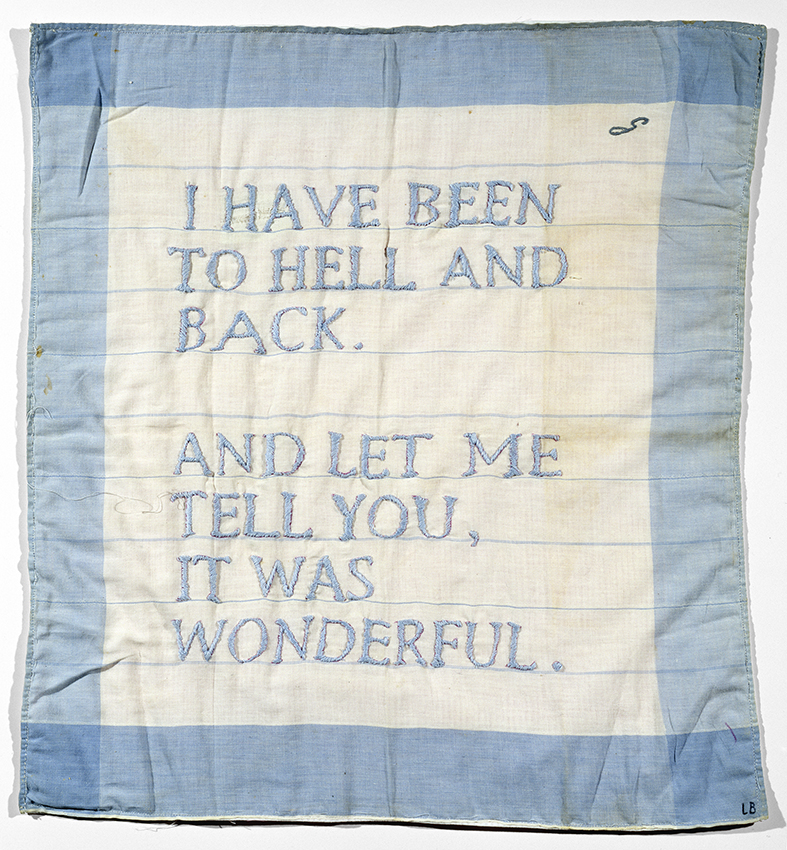
Photo by Christopher Burke. © The Easton Foundation/Licensed by JASPAR and VAGA at Artists Rights Society (ARS), New York, courtesy Mori Art Museum ), New York, courtesy Mori Art Museum.
One of the most important artists of the 20th century, Louise Bourgeois (1911–2010), is the focus of this large-scale solo exhibition in Japan. Throughout her 70-year career, Bourgeois explored the tension inherent in binary oppositions such as male and female, passive and active, figurative and abstract, and conscious and unconscious, using a variety of media. With her unparalleled sculptural power, she made these tensions coexist within her works. She transcended the complex and sometimes traumatic memories and emotions from her childhood into universal motifs, expressing contrasting emotions and psychological states, such as hope and fear, anxiety and comfort, guilt and atonement, tension and release. Her work has been highly regarded in the context of feminism as well. This exhibition features around 100 works (half of which are shown in Japan for the first time) and is organized into three sections, offering a comprehensive look at this extraordinary artist’s life and career. The works, imbued with the artist’s strong will to live, offer insight into overcoming the suffering humanity faces today.
Exhibition period: September 25, 2024 – January 19, 2025
Venue: Mori Tower, Roppongi Hills, 6-10-1 Roppongi, Minato-ku, 53F
URL: Mori Art Museum
Salasa: It sounds interesting if I could do both; I’d like to visit them.
Have you ever toured art events like this one?
Salasa: I have attended art festivals in regional areas, but in Tokyo, I usually go to see exhibits that catch my interest. Galleries can sometimes be in hard-to-reach locations, so it would be really convenient if something like ‘AWT’ offered bus transportation, it would make it much easier physically.
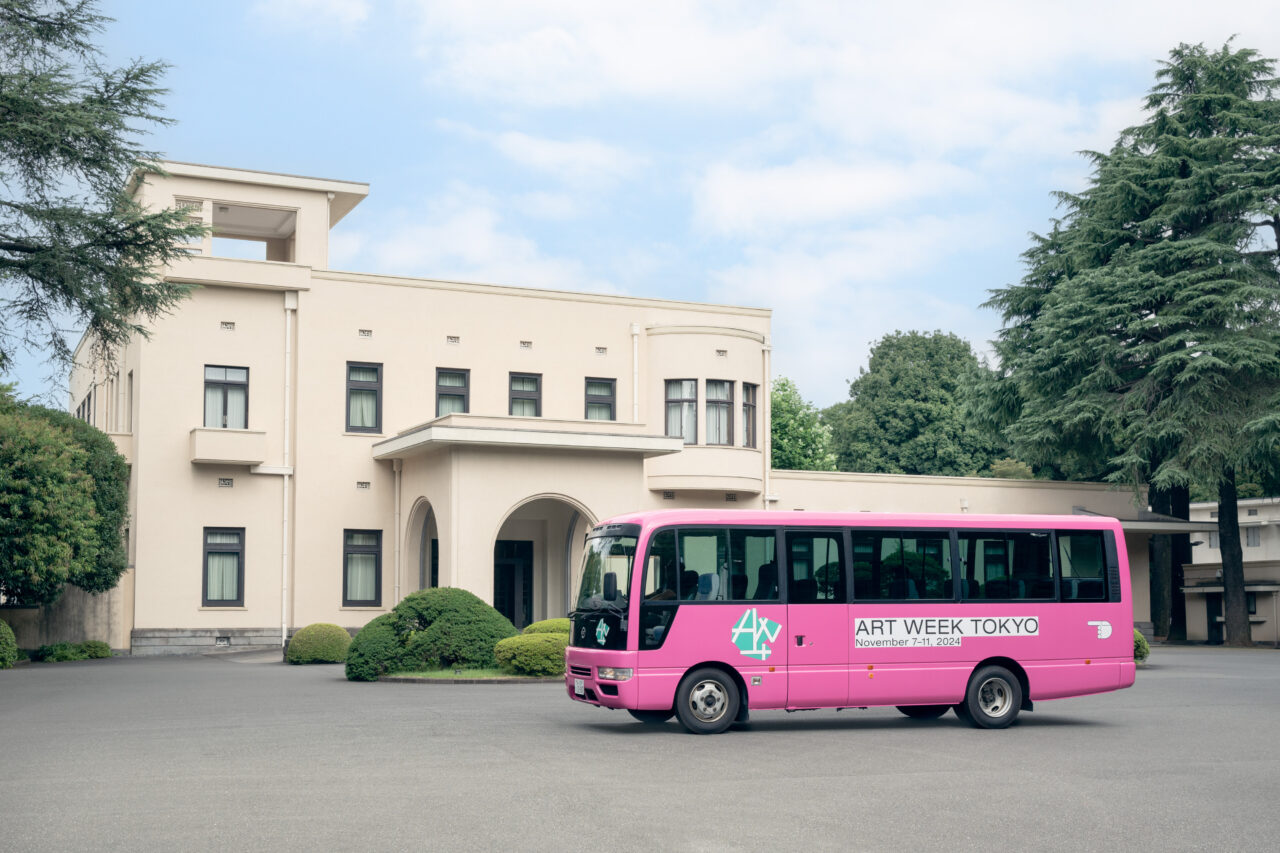
How do you usually view exhibitions?
Salasa: It was interesting to listen to the gallery staff’s explanation today, but usually, I often rent audio guides. When I visited the Sagrada Familia in Spain, I couldn’t understand the explanation in English, so I decided to try the audio guide, and I found it fascinating. Since then, I’ve started using them at museums as well. I’m not sure if it’s necessarily good or bad, but having one does change the way I view things and broadens my interest.
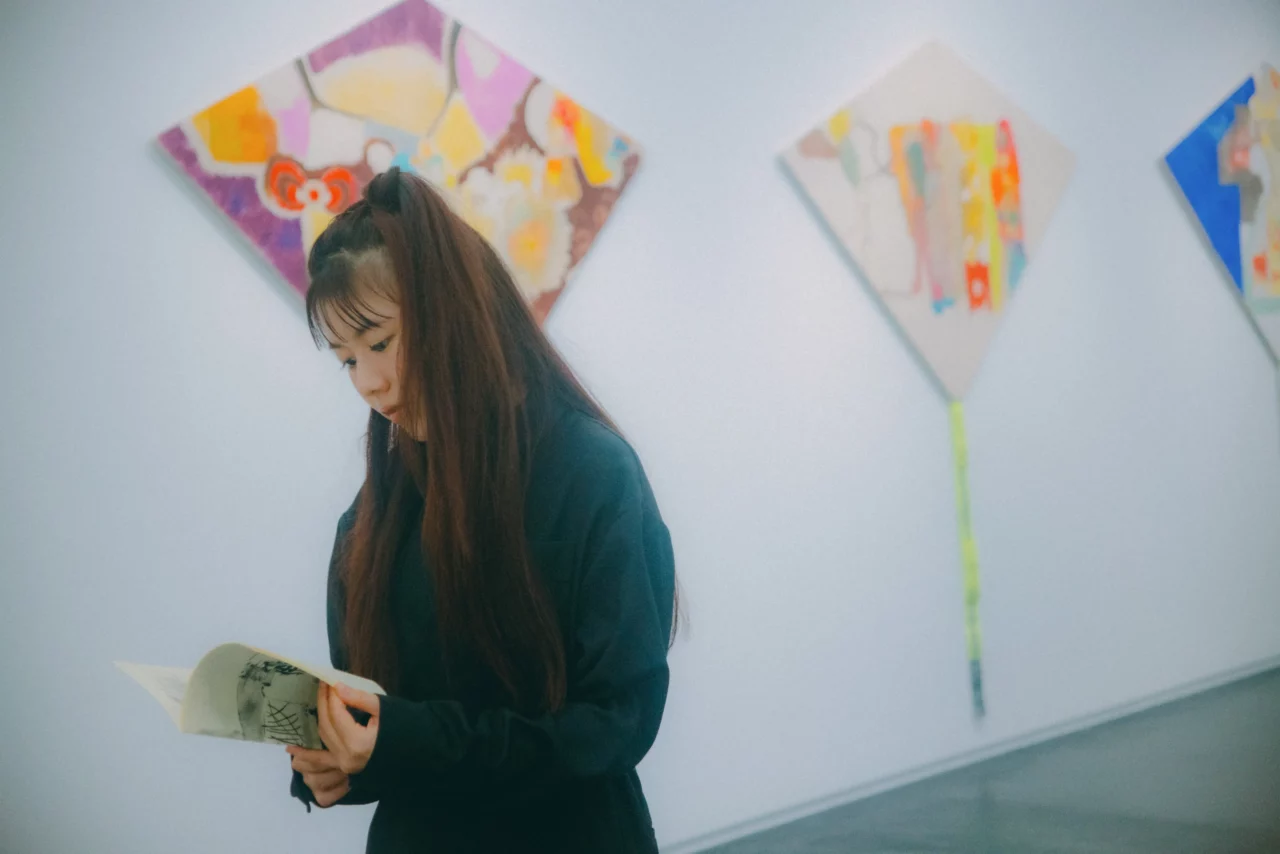
In another article within this project, when I interviewed haru., they mentioned something along the lines of, “It’s common to feel like you don’t have the right eye for art or that you don’t understand it,” and the audio guide seems like one way to bring the artwork closer to the viewer.
Salasa: With music and movies, you don’t really feel like you need to know something beforehand to enjoy them, but with art, it can sometimes feel difficult to grasp. I think there’s also a difference depending on whether words are used in the artwork or not.
There are so many ways to communicate, but modern society tends to center on language, so the pull of words is strong.
Salasa: I understand. Because of that, I’m drawn to works that feel like they’re inspired by things that are invisible or not easily explained. I was deeply moved when I saw the “Another Energy: The Power of Women Artists Who Keep Challenging” exhibition.
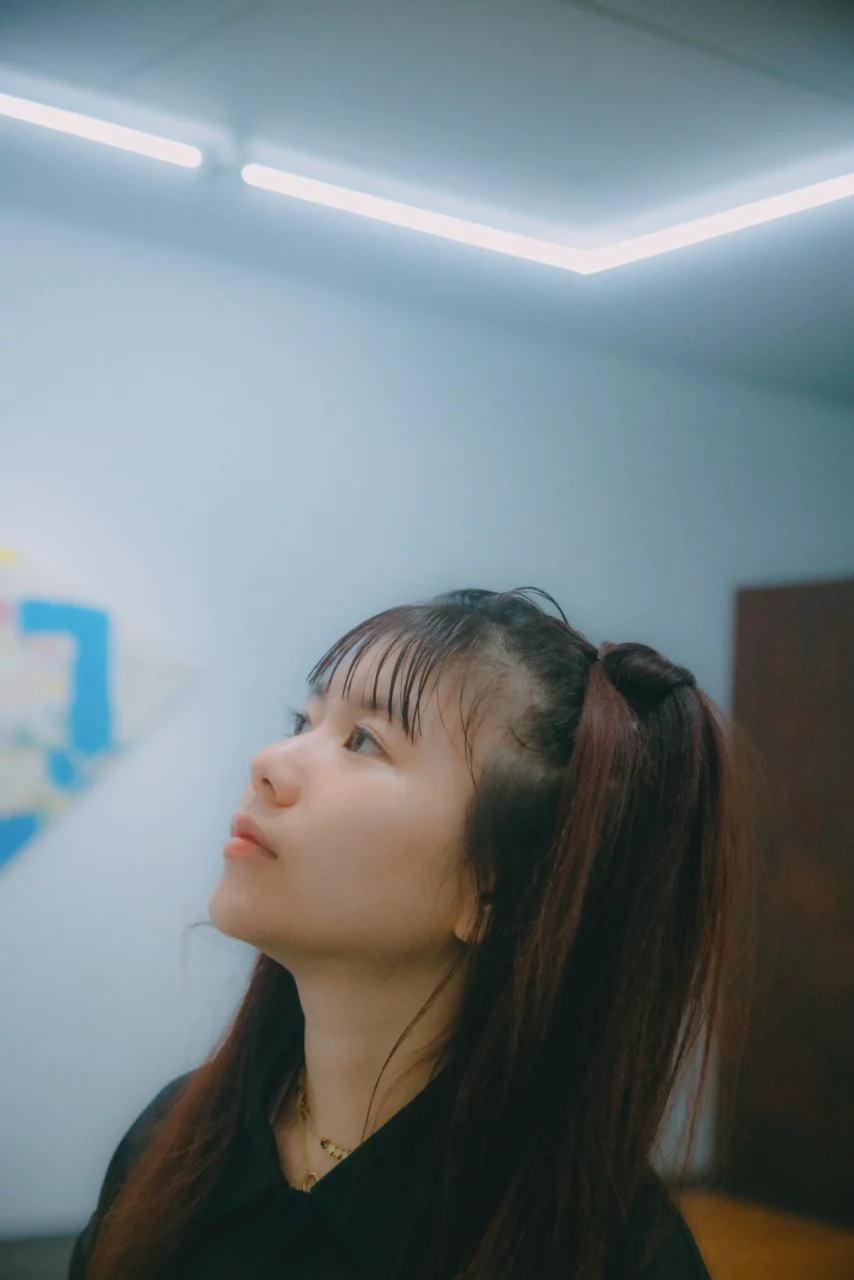
Salasa: I used to think of contemporary art as something that presents new ideas within the context of society and history, but in the “Another Energy” exhibition, there were many artists creating works focused on sensory experiences and invisible energies, which I really liked. Since it was an exhibition featuring female artists, there was a strong sense of hope in seeing a different trend from the male-dominated art world. It’s my favorite exhibition of all the ones I’ve seen so far.
*Editor’s note: held at Mori Art Museum from 2021 to 2022.
AWT FOCUS “Earth, Wind, and Fire: Imagining the Future from Asia” Venue: Okura Shukokan Museum of Art
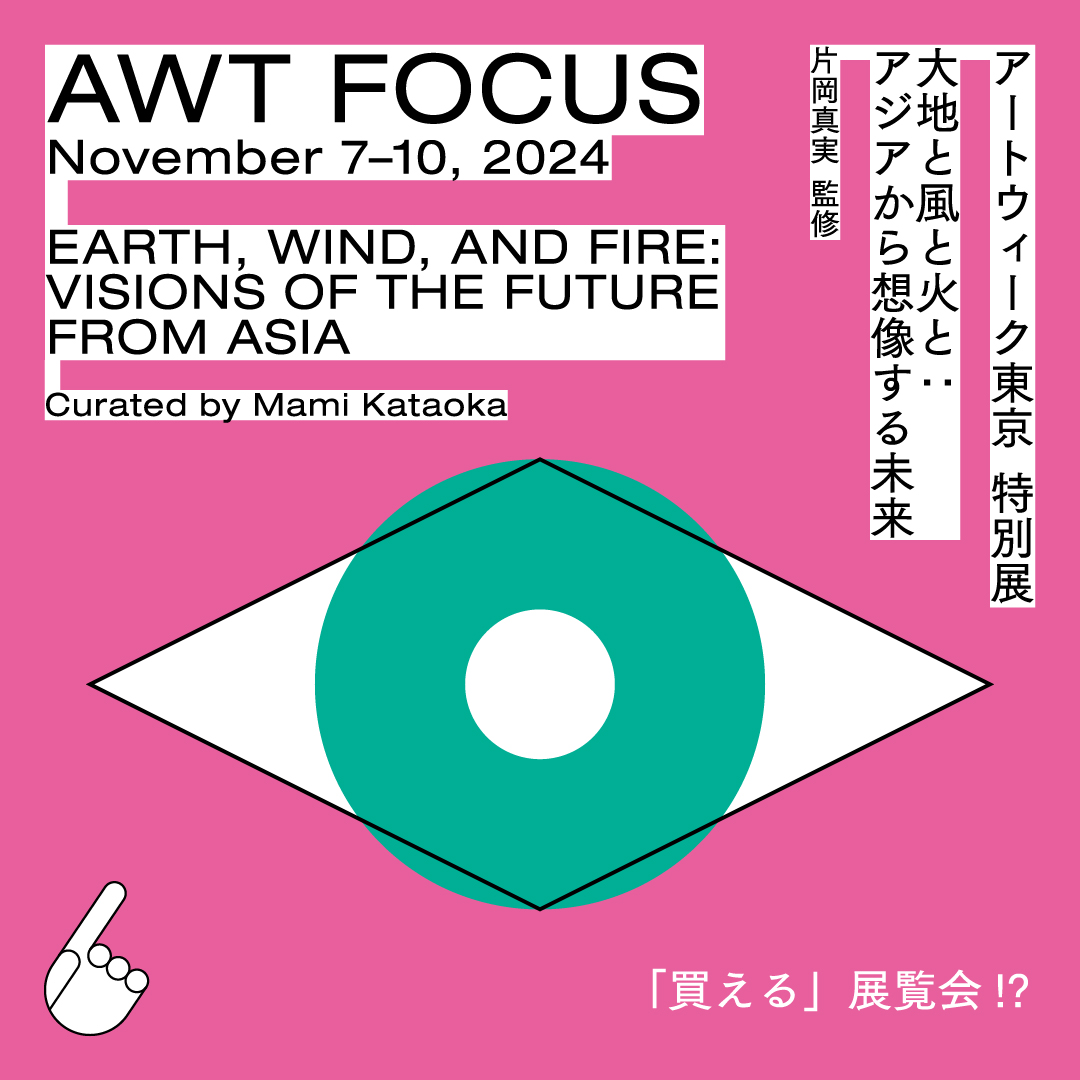
Launched in 2023, “AWT FOCUS” is a “buyable exhibition” that combines the experiences of viewing art at museums and purchasing works at galleries. The exhibition is curated each year around a different theme, and all the works on display are available for purchase.
The curator for the second edition in 2024 is Mami Kataoka, Director of the Mori Art Museum and also the Director of the National Art Research Center. Titled “Earth, Wind, and Fire: Imagining the Future from Asia,” the exhibition explores an Asian worldview that focuses on natural laws and invisible energies, rather than artificial classifications or power-driven governance, to contemplate a future where diversity coexists.
Dates: November 7 (Thu) – November 10 (Sun), 2024
Location: Okura Shukokan Museum of Art, 1st and 2nd Floors / 2-10-3 Toranomon, Minato-ku
URL: https://www.artweektokyo.com/focus/
Salasa: I really like the theme of this year’s “Earth, Wind, and Fire: Imagining the Future from Asia,” curated by Mami Kataoka, who also curated the “Another Energy” exhibition. I’m particularly interested in works that make you aware of invisible energies.
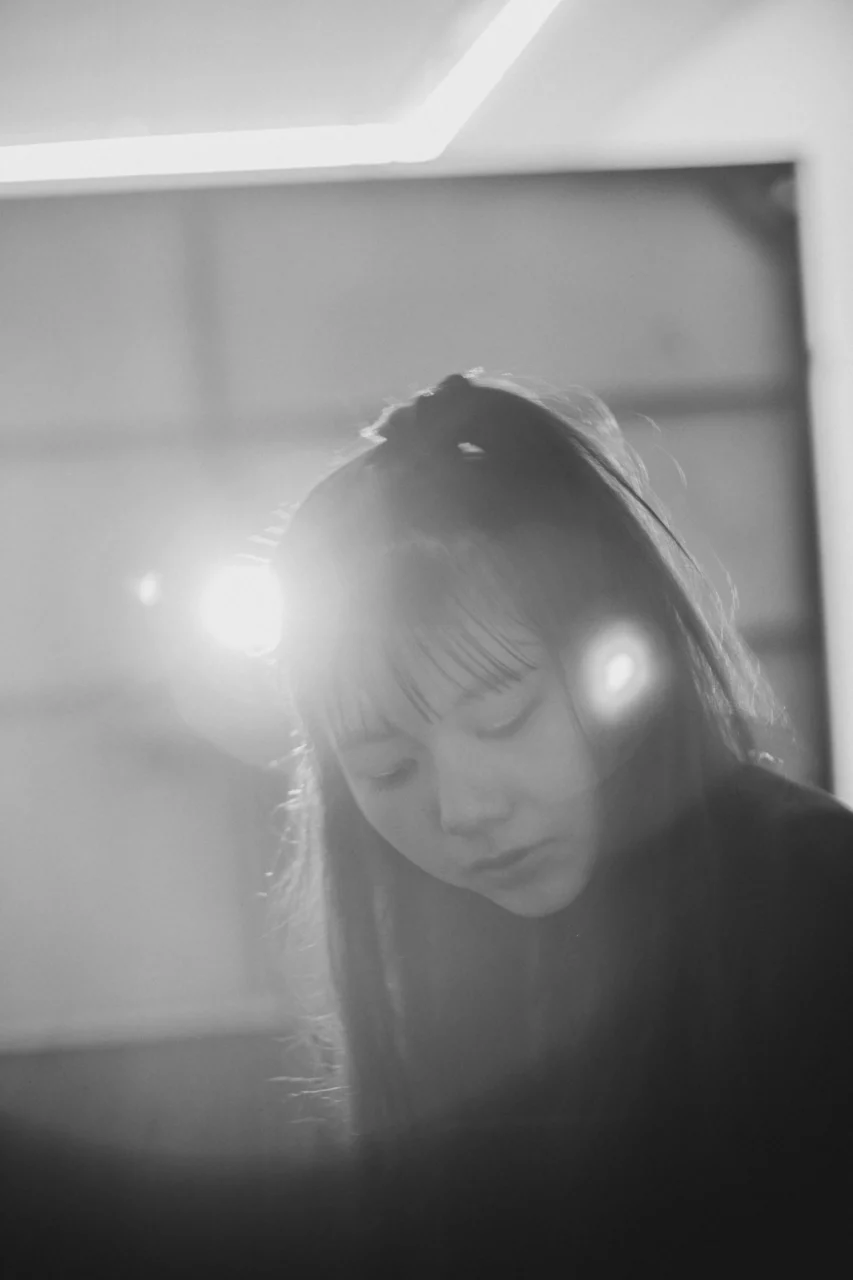
Salasa’s Recommended Route for the AWT BUS Tour.
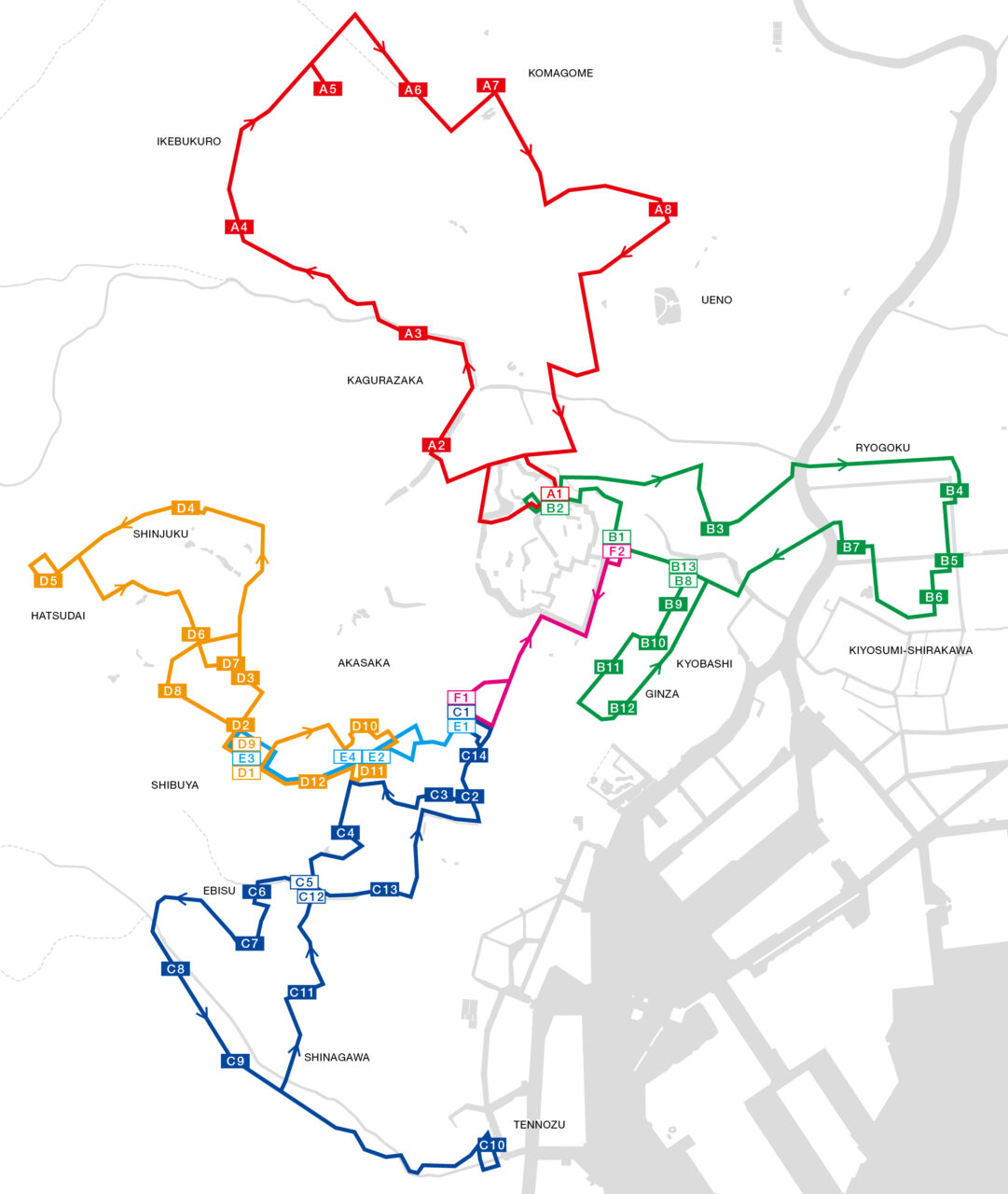
Click here for the AWT BUS map
Ginza Maison Hermes Forum (Ginza)
↓
Taka Ishii Gallery (Roppongi)
↓
Ota Fine Arts (Roppongi)
↓
Ken Nakahashi (Shinjuku)
↓
Opera City (Hatsudai)
↓
Gallery 38 (Harajuku)
Art Week Tokyo
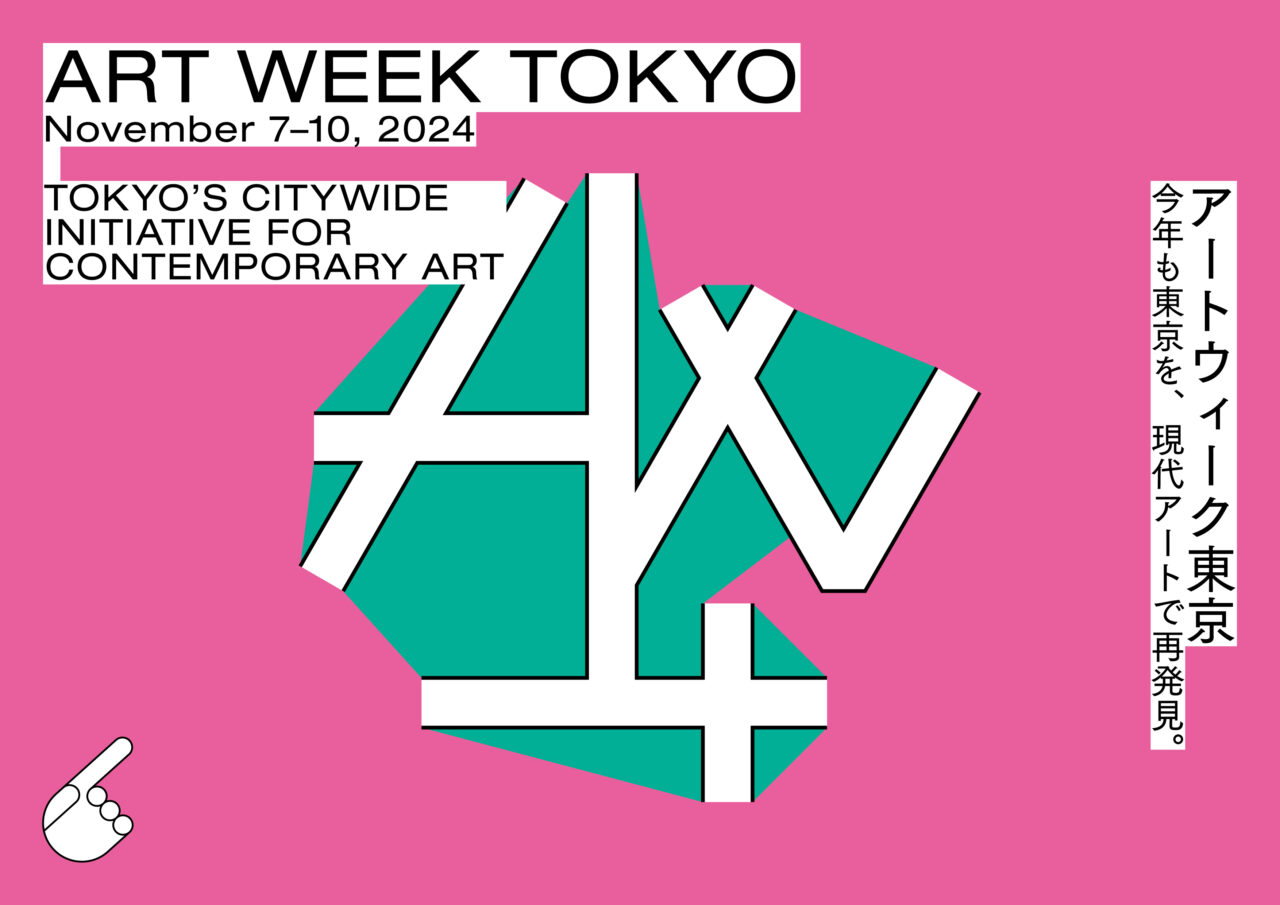
Dates: November 7, 2024 (Thursday) – November 10, 2024 (Sunday) 10:00 AM – 6:00 PM
Venues: Participating museums and galleries in Tokyo, AWT FOCUS, AWT BAR, and other program venues
Organizer: Contemporary Art Platform Association
Partnership: Art Basel
Special Cooperation: Agency for Cultural Affairs
Official Website: https://www.artweektokyo.com/







